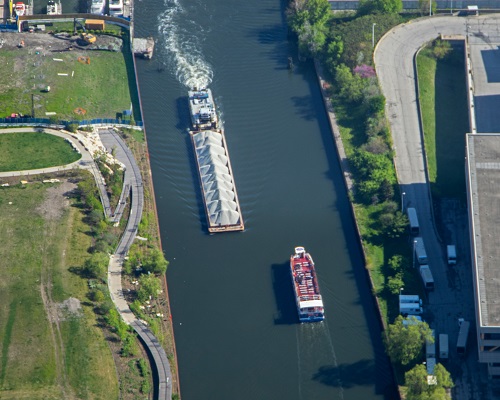<< Research Projects Overview << Year Six Projects Overview
Data Analytics and Support Tools for Inland Waterways

Professor, Department of Civil Engineering
University of Memphis
mgkolias@memphis.edu
Sabyasachee Mishra, Ph.D.
Associate Professor, Department of Civil Engineering
University of Memphis
smishra3@memphis.edu
Professor, Department of Civil, Environmental and Geomatics Engineering
Florida Atlantic University
ekaisar@fau.edu
Proposal Summary and Objectives
The United States inland waterways system (also known as the backbone of the transportation logistic system) directly connects 28 states and plays a crucial role in our nation’s competitiveness and economic growth supporting efficient, safe, and sustainable transport for multiple commodities including agriculture, chemicals, and building materials. The cost to transport commodities on the inland waterways is roughly half the cost to ship by rail. Estimated transportation cost savings, according to the United States Army Corps of Engineers (USACE) and the U.S. Chamber of Commerce range from $7 billion (bn) to $9 bn annually. By 2045, it is expected that the U.S. Inland Waterways System (IWS) will contribute (in)directly $121-bn in economic output, 450 thousand jobs, and $62.3-bn in GDP. Furthermore, inland waterway transportation provides effective means of expanding capacity with less environmental and funding issues compared to other modes of transportation. Unfortunately, lagging infrastructure maintenance and improvement have resulted in frequent delays, with the percentage of delayed vessels increasing from 35% in 2010 to 53% in 2017. A closer look at our current IWS conditions, connectivity, operations, and redundancies is warranted. As a country we need the tools and data to identify areas to invest (capital and operational) to take full advantage of the available capacity, increase efficiency, safety, and resiliency, and reduce externalities from freight movements. The objective of this research is to develop a knowledge bank on best practices on inland waterway programs, web-based and desktop Data Analytics and Decision Support (DADS) tools that analyze and synthesize the available data on IWS and its assets (e.g., ports, terminals, locks, etc.) into a set of performance stressors, metrics, and indices. Achieving these objectives will allow State DOTs and other public agencies (e.g., USACE) to: 1) Perform in-house analysis of IWS commodity flows through its ports, terminals, and other intermodal facilities, 2) Identify stressors of IWS and its assets, and 3) Identify and prioritize investments to accommodate current and projected growth of critical commodities favorable for waterway transport and modal shift (from truck/rail).
Funding Amount:
Status: Complete
Duration: June 1, 2022 – May 31, 2023